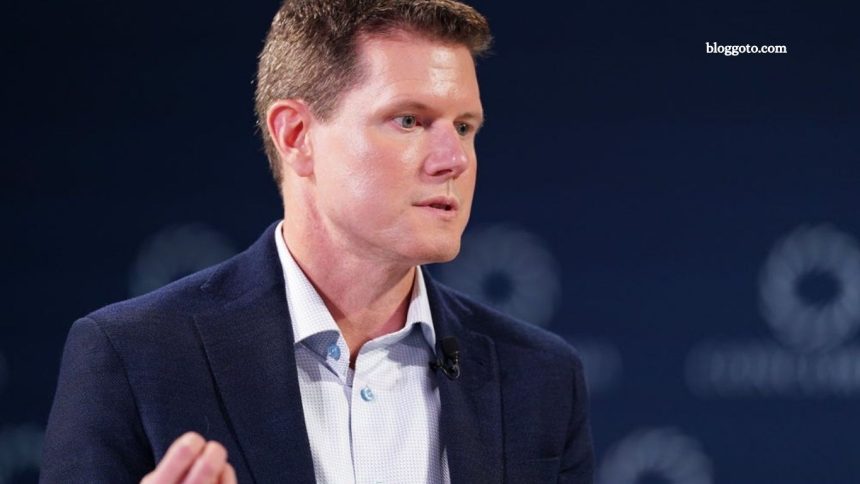Amazon is facing internal scrutiny as its top grocery executive, Jason Buechel, openly criticized the company’s layers of bureaucracy, calling it “ridiculous” and a barrier to efficiency. In a leaked internal meeting, Buechel, who serves as both Vice President of Worldwide Grocery and CEO of Whole Foods, expressed frustration with the sluggish pace of decision-making within Amazon’s grocery division.
Bureaucracy Slows Down Progress
During the meeting, which was later leaked to Business Insider, an employee raised concerns about the complex approval processes that often stall progress. Buechel didn’t hold back in his response, admitting that the company’s internal red tape was unnecessarily slowing down important initiatives.
“The feedback I’ve gotten from team members and employees is that ultimately, we’re wasting time,” Buechel said. “It’s taking too long for decisions and approvals to take place, and it’s actually holding back some of our initiatives.”
He emphasized that Amazon is actively working to streamline these processes, especially those related to spending approvals and project advancement. The statement reflects growing concern among leadership that excessive internal procedures may be hindering innovation and competitiveness—especially in a fast-paced retail environment.
Read More: How to Safely Search the Dark Web
A Company-Wide Push to Cut Bureaucracy
Buechel’s remarks align with broader efforts led by Amazon CEO Andy Jassy to reduce internal complexity. In a move that surprised many, Jassy introduced a “bureaucracy mailbox” last September. This initiative allowed employees to report inefficient processes directly to leadership.
The inbox reportedly received over 500 submissions within weeks. By November, Amazon had acted on more than 150 of those reports, proving that leadership is taking employee feedback seriously.
Middle Management Under the Microscope
In tandem with these efforts, Jassy also committed to reducing layers of middle management by March. This goal was met through a combination of pausing new managerial hires, demoting some managers, and increasing the number of direct reports per manager. The approach aimed to flatten the organizational structure, enhance accountability, and accelerate decision-making.
At a previous all-hands meeting, Jassy made his stance on the issue crystal clear:
“The reality is that the [senior leadership team] and I hate bureaucracy,” he said.
Despite the recent criticism, Jassy insisted that Amazon is still relatively free of political games and corporate bloat—one of the reasons he continues to lead the company.
Layoffs Reflect Cost-Cutting Measures
These organizational changes have coincided with significant layoffs across Amazon’s departments. Since 2022, the company has laid off more than 27,000 employees as part of ongoing cost-cutting efforts.
Most recently, dozens of jobs were eliminated in the Goodreads and Kindle divisions. Additionally, Amazon laid off at least 125 workers from its Fresh grocery store in Federal Way, Washington. An Amazon spokesperson confirmed that affected employees were offered similar roles at nearby locations, aiming to soften the impact of the cuts.
Challenges in the Grocery Sector
Amazon’s grocery division, which includes Amazon Fresh and Whole Foods, has faced several operational challenges in recent years. While the company has invested heavily in physical retail, including cashier-less technology and same-day delivery, bureaucracy appears to be one of the biggest internal hurdles.
Buechel’s candid remarks may signal a turning point as Amazon doubles down on agility and innovation in the highly competitive grocery market.
Frequently Asked Questions
Who criticized Amazon’s internal bureaucracy?
Jason Buechel, Amazon’s Vice President of Worldwide Grocery and CEO of Whole Foods, described the bureaucracy as “ridiculous” during a leaked internal meeting.
What specific issues did Buechel point out?
He said that multiple approval layers were slowing down decision-making and stalling key business initiatives, especially around spending and project management.
What is the “bureaucracy mailbox”?
Introduced by CEO Andy Jassy, the mailbox allows employees to report inefficient or unnecessary processes. Over 500 emails were submitted, and Amazon acted on more than 150 suggestions.
Has Amazon made structural changes to address these concerns?
Yes. The company reduced layers of middle management by pausing new hires, demoting some managers, and increasing direct reports for existing ones.
How have employees reacted to these changes?
While leadership appears committed to reform, the broader employee sentiment remains mixed, particularly in light of recent layoffs.
What departments were affected by the latest job cuts?
Amazon has cut positions in Goodreads, Kindle, and its grocery division, including a Fresh store in Washington state.
How is the grocery division being affected by bureaucracy?
According to Buechel, internal red tape is slowing initiatives and creating inefficiencies that impact the overall performance of Amazon’s grocery operations.
What are Amazon’s long-term goals for organizational efficiency?
The company aims to streamline operations, empower faster decision-making, and eliminate unnecessary complexity to stay competitive in fast-moving markets.
Conclusion
Jason Buechel’s blunt remarks have brought Amazon’s internal struggles into the spotlight. While the company continues to push boundaries in tech and retail, it’s clear that internal bureaucracy has become a growing concern, even at the top. With leadership now actively working to eliminate inefficiencies, Amazon may be better positioned to reclaim the agility and speed that once defined its culture.
As consumer expectations evolve and competition intensifies, the pressure is on for Amazon to not only innovate externally butalso optimize internally. The road ahead may require bold decisions and uncomfortable changes, but transparency from leaders like Buechel and Jassy suggests the company is ready to face those challenges head-on.











